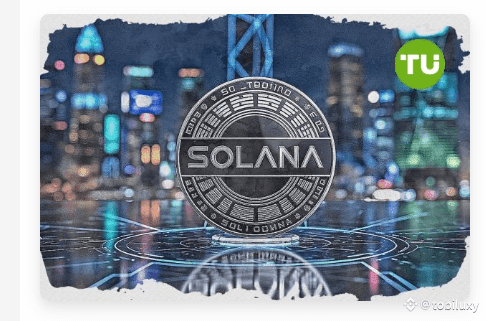Solana $SOL is currently trading around $176.74, with recent price movements fluctuating between $174 and $184, showing signs of short-term volatility yet maintaining strong long-term bullish sentiment. Major financial institutions are showing increasing interest: CME Group launched Solana futures contracts in March 2025, and Franklin Templeton has filed for a spot Solana ETF, appointing Coinbase as the custodian, signaling deepening institutional confidence. Analysts at JPMorgan have also raised their long-term price target for SOL to $500 by 2026, citing growing utility and adoption within decentralized finance (DeFi).
Meanwhile, BIT Mining Ltd. announced its intention to acquire between $200 million and $300 million worth of SOL to build a Solana treasury reserve, which triggered a significant rally in its stock price. On the technical side, Solana continues to mature rapidly with several major upgrades. The Firedancer validator client, designed to increase speed and reduce downtime, is moving the network beyond its “mainnet-beta” status. Security enhancements like the Winternitz Vault are making Solana more resilient against potential quantum computing threats, and new features such as Accounts Lattice Hash and SVM rollups are improving scalability and throughput.
Additionally, Solana is preparing to launch its own mobile device, the Solana Seeker Smartphone, which will offer native staking, DeFi access, and on-chain tools directly from a mobile interface  helping onboard users in emerging, mobile-first regions. The ecosystem remains one of the fastest growing, with over 2,500 active developers, more than 408 billion total transactions, and over 40 million daily transactions reported as of late 2024. According to Electric Capital, Solana is now the #1 ecosystem for attracting new developers, even surpassing Ethereum, with major growth noted across Asia and other international markets.
helping onboard users in emerging, mobile-first regions. The ecosystem remains one of the fastest growing, with over 2,500 active developers, more than 408 billion total transactions, and over 40 million daily transactions reported as of late 2024. According to Electric Capital, Solana is now the #1 ecosystem for attracting new developers, even surpassing Ethereum, with major growth noted across Asia and other international markets.
Developer activity continues to thrive, supported by initiatives like Superteams, Greed Academy, and multiple hackathons such as the Solana AI Hackathon, which received over 400 project submissions. A standout example is SendAI, which released an AI Agent Kit that integrates across 40+ protocols, enabling autonomous on-chain interactions. Real-world financial integrations are also increasing: the Solana Foundation has partnered with R3, connecting the network to private banking infrastructure used by institutions like HSBC, Bank of America, and Singapore’s MAS, while also gaining board representation at R3 through Lily Liu.
Overall, the narrative around Solana has shifted from doubt to deployment, with major institutions now asking “How should we use Solana?” instead of “Should we invest in it?”, reflecting a growing recognition of Solana’s speed, developer traction, and production-level readiness. All these developments place Solana as a serious contender for long-term relevance in both the crypto and traditional finance ecosystems.
